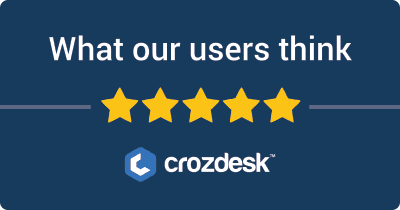
Introduction: Comparing Asana and Airtable in Task Management Tools
Asana and Airtable have emerged as two popular options in the landscape of task management tools, each serving specific user needs while offering unique functionalities. Asana is primarily designed for project and task management, enabling teams to organize, track, and manage their work effectively. On the other hand, Airtable combines project management with a flexible database structure, allowing users to create customized workflows and collaborate seamlessly.
Users are drawn to these tools for their capability to enhance productivity, streamline communication, and manage projects efficiently. Asana is often favored for its straightforward task management features, while Airtable appeals to those looking for customizable data organization.
When deciding between these two platforms, users should consider several primary aspects:
- Features: Compare task assignment, project views, and collaboration tools.
- Pricing: Examine subscription plans and cost-effectiveness.
- Ease of Use: Assess user interface and learning curve.
- Integrations: Look into compatibility with other software.
This comparison will help potential users identify which tool best suits their workflow and project management needs.
Asana VS Airtable: Which tool is the most popular?
| Tool | Number of Reviews | Average Rating | Positive Reviews | Neutral Reviews | Negative Reviews |
|---|---|---|---|---|---|
| Asana | 85 | 3.62 | 63 | 4 | 18 |
| Airtable | 57 | 3.33 | 34 | 1 | 22 |
Asana emerges as the most popular tool based on the number of reviews and a higher average user rating. It garnered 85 reviews with an average rating of 3.62, indicating a generally favorable perception among users. In contrast, Airtable is the least popular, receiving 57 reviews and an average rating of 3.33, along with a higher proportion of negative feedback.


Asana and Airtable: Quick Comparison Overview
| Feature/Aspect | Ahrefs | SEMrush |
|---|---|---|
| Primary Features | – Site Explorer – Keyword Explorer – Backlink Checker – Content Explorer – Rank Tracker |
– Keyword Research – Site Audit – Position Tracking – Content Analyzer – Marketing Insights |
| Target Audience | – SEO professionals – Digital marketers – Agencies focusing on content marketing and backlink analysis |
– Digital marketers – SEO experts – Content marketers – Social media marketers and PPC specialists |
| Main Advantages | – Robust backlink analysis – Comprehensive keyword data – Intuitive user interface – Constantly updated index |
– All-in-one digital marketing tool – Extensive competitor analysis – Wide array of tools for SEO and PPC – Integrated social media management |
| Core Value Proposition | Focused on providing in-depth SEO insights, particularly strengths in backlink profiles and organic keyword rankings. Ideal for users prioritizing content strategy and link-building efforts. | Offers a holistic view of digital marketing, making it easier to manage all aspects of online presence through an extensive range of tools for SEO, PPC, and social media marketing. |
| Ideal Use Cases | – Conducting comprehensive link audits – Developing effective content strategies – Tracking backlinks and organic rankings – Keyword planning for SEO campaigns |
– Managing and optimizing PPC campaigns – Conducting competitive analysis for market positioning – Comprehensive content analytics and SEO tracking – Social media metrics and management |
Most liked vs most disliked features of Asana and Airtable
| Feature | Asana | Airtable |
|---|---|---|
| Most Liked | – Effective project organization and task management, especially for teams. | – Simple and intuitive interface, easy for non-tech-savvy users. |
| – Supports collaboration, clearly defining roles and reducing uncertainty. | – Flexibility in data presentation and organization for custom setups. | |
| – Seamless functionality across devices for up-to-date information. | – Strong collaboration capabilities for effective project tracking. | |
| – Prompt and helpful responses from the support team. | – Diverse integration options, although some implementations are lacking. | |
| – High level of customization appreciated for adapting workflows. | – Straightforward import and export features for easy data transition. | |
| Most Disliked | – Desired greater customization options for the ‘My Tasks’ view and organization. | – Desire for advanced features to enhance capability. |
| – Lack of intuitive navigation for file storage associated with tasks. | – Issues with certain integrations that may not meet expectations. | |
| – Requests for automatic assignment of due dates for newly created tasks. | – Concerns that Airtable may fall short for larger projects compared to traditional database systems. | |
| – Learning curve for new users to adapt to the platform. | – Overwhelming visualization capabilities leading to indecision. | |
| – Suggestion for a more integrated view combining different media and notes within tasks. | – User-friendly interface but still a learning curve for advanced features. |
Key Features of Asana vs Airtable
Sure! Here’s an overview of the key features of Asana and Airtable as task management tools, along with the benefits these features provide to users, including any unique aspects of each platform.
Asana
-
Task and Project Management
- Benefits: Users can create tasks, assign them to team members, set due dates, and establish priorities. This structured organization helps improve team accountability and ensures deadlines are met efficiently.
- Unique Aspect: Asana uses templates for projects, making it easy for teams to kick start repetitive projects quickly.
-
Custom Fields
- Benefits: Users can customize fields to capture information relevant to their specific workflows, such as status updates or project stages. This flexibility helps teams manage unique workflows more effectively.
- Unique Aspect: Asana allows for various custom field types, including dropdown lists, text, and numbers, which can cater to a wide range of project needs.
-
Timeline & Gantt Charts
- Benefits: This feature allows users to visualize project schedules and deadlines. It helps with planning and forecasting by providing a clear view of project timelines and dependencies.
- Unique Aspect: Asana’s timeline includes the ability to manage dependencies, showing how tasks are interlinked, which is crucial for managing complex projects.
-
Workload Management
- Benefits: Users can see how team members are allocated across tasks, helping to balance workloads and prevent burnout.
- Unique Aspect: Asana’s workload feature provides a color-coded view of team capacity, allowing for quick adjustments in task assignments.
-
Integration Ecosystem
- Benefits: Asana integrates with a variety of tools such as Slack, Dropbox, and Google Drive, which enhances communication and collaboration.
- Unique Aspect: Asana has a robust API for custom integrations, allowing larger organizations to tailor the tool to their unique process needs.
-
Reporting and Dashboards
- Benefits: Users gain insights into project progress, team productivity, and task completion rates, which can help in performance assessments and strategic planning.
- Unique Aspect: Asana provides customizable reporting templates, enabling project managers to use specific metrics that align with their goals.
Airtable
-
Flexible Database Structure
- Benefits: Unlike traditional task management tools, Airtable functions like a database, allowing users to organize data in tables with custom fields, fostering enhanced data organization and categorizations.
- Unique Aspect: Users can switch between different views (grid, calendar, gallery, Kanban) effortlessly, enhancing how they display and interact with data.
-
Collaboration Features
- Benefits: Airtable allows real-time collaboration with comments and mentions, allowing team members to communicate directly within the context of tasks/projects. This enhances teamwork and clarifies expectations.
- Unique Aspect: Airtable’s collaboration features extend into permissions, allowing different levels of access for various users, tailored specifically to the sensitive nature of tasks.
-
Rich Field Types
- Benefits: Users can include attachments, links, checkboxes, and drop-downs, accommodating a wide range of data types and use cases.
- Unique Aspect: Airtable’s use of rich field types makes it much more versatile than typical task management tools, as it can also function as a CRM, project tracker, and more.
-
Automations and Integrations
- Benefits: Users can automate repetitive tasks and workflows, saving time and reducing errors. Airtable supports integrations with tools like Zapier and Integromat for extended functionalities.
- Unique Aspect: Airtable’s automation capabilities allow for conditional triggers, enabling highly customizable workflow automations.
-
Templates and Blocks
- Benefits: Airtable offers a variety of templates to get users started on specific types of projects quickly, whether it’s project management, event planning, or content calendars.
- Unique Aspect: The “Blocks” feature allows users to extend functionality through visualizations, dashboards, and other advanced capabilities, making it highly adaptable.
-
Calendar and Timeline View
- Benefits: Users can visualize tasks on a calendar or timeline, aiding in project scheduling and time management. This ensures alignment with deadlines and helps users maintain organization.
- Unique Aspect: Airtable’s calendar view combines flexibility from its database features, allowing detailed entries and notes within the events.
Conclusion
Both Asana and Airtable provide robust task management features, catering to different needs. Asana is more focused on straightforward task assignment and project management, while Airtable offers a more flexible database approach that can be tailored to diverse organizational needs. Depending on a user’s specific requirements—whether it’s project clarity, team collaboration, or data versatility—choosing between Asana and Airtable will hinge on which features align best with their workflow.
Asana vs Airtable Pricing Comparison
| Feature | Asana Pricing Tiers | Airtable Pricing Tiers |
|---|---|---|
| Free Tier | Free for up to 15 users. Basic tasks and project management tools. | Free for unlimited bases with essential features available. |
| Basic Plan | $13.49/month (billed annually) or $15/month (billed monthly) – Unlimited tasks, projects, and messages – Basic dashboards – Collaboration features |
$10/user/month (billed annually) or $12/user/month (billed monthly) – Customizable views – Essential apps, forms, and automations |
| Premium Plan | $30.49/month (billed annually) or $34/month (billed monthly) – Advanced integrations – Timeline view and custom fields – Reporting features |
$20/user/month (billed annually) or $24/user/month (billed monthly) – Enhanced features including blocks, integrations, and advanced field types |
| Business Plan | $48.99/month (billed annually) or $54/month (billed monthly) – Goals and Portfolio view – Custom templates and rules – Advanced search and reporting |
$40/user/month (billed annually) or $48/user/month (billed monthly) – Enhanced Apps and Interface, advanced automations, and personal support |
| Enterprise Plan | Custom pricing – Advanced security features – Dedicated Customer Success Manager – Advanced Admin controls |
Custom pricing – Enhanced security and compliance features – Custom onboarding and unlimited workspaces |
| Free Trials | 30-day free trial for Premium and Business plans. | Free trial for all paid plans with the option to upgrade after. |
| Special Discounts | Discounts for annual payments, free for students and non-profits. | Discounts available for annual billing; non-profit and educational discounts available. |
Key Differences:
- User Limits: Asana’s free tier allows for up to 15 users, whereas Airtable provides unlimited bases but limits features.
- Customization: Airtable offers more customizable views and apps even at lower tiers compared to Asana.
- Target Audience: Asana focuses on project management while Airtable serves as a flexible database tool that includes project management functionalities.
Support Options Comparison: Asana vs Airtable
| Feature | Asana | Airtable |
|---|---|---|
| Live Chat | Available during business hours for Premium, Business, and Enterprise users. | Not available for all users; accessible for Pro, Plus, and Enterprise plans. |
| Phone Support | Limited to customers on Business and Enterprise plans. Availability is based on specific hours. | Not offered; all support is provided through online channels. |
| Documentation | Extensive resources including user guides, FAQs, and community forums. Regularly updated. | Comprehensive documentation with guides, tips, and a searchable knowledge base. Frequently updated. |
| Webinars/Tutorials | Regularly scheduled webinars and on-demand tutorials available for users. | Offers a range of live webinars and an extensive library of tutorial videos for varying skill levels. |
| Community Support | Active community forums for peer-to-peer support and discussions. | Community forums available for sharing knowledge and experiences. |
Unique Features of Asana Vs Airtable
| Brand | Unique Feature | Description | Added Value | Why it Might be a Deciding Factor |
|---|---|---|---|---|
| Asana | Timeline | Visual project planning tool that provides a Gantt chart view, displaying tasks along a timeline. | Allows teams to visualize project schedules and deadlines in a comprehensive way. | Ideal for teams managing complex projects with interdependencies that require precise scheduling. |
| Asana | Goals | Feature to set, track, and manage organizational goals. | Aligns team efforts with broader company objectives, ensuring everyone stays aligned with priority projects. | Helps organizations maintain focus on strategic initiatives and measure progress effectively. |
| Asana | Workload | Tool for visualizing team capacity and workload distribution across projects. | Enables managers to see who is overloaded and who has capacity, facilitating better resource allocation. | Helps in preventing burnout and ensuring even distribution of tasks among team members. |
| Airtable | Custom Views | Allows users to create tailored views (grid, calendar, Kanban) that can be customized as per needs. | Enhances flexibility in how data is displayed, catering to various project management styles. | Ensures adaptability to team preferences and workflow, making it suitable for diverse project needs. |
| Airtable | Blocks | Modular apps that integrate with Airtable databases for additional functionalities (e.g., charts, maps). | Extends base capabilities by adding interactive apps to visualize data in various formats. | Encourages creativity and enhances data interaction, making it a more dynamic tool for teams. |
| Airtable | Templates | A variety of pre-made templates for common use cases (e.g., project tracking, event planning). | Saves time on setup and provides a solid starting point for new users unfamiliar with the platform. | Facilitates quick onboarding and allows teams to leverage best practices from the outset. |


